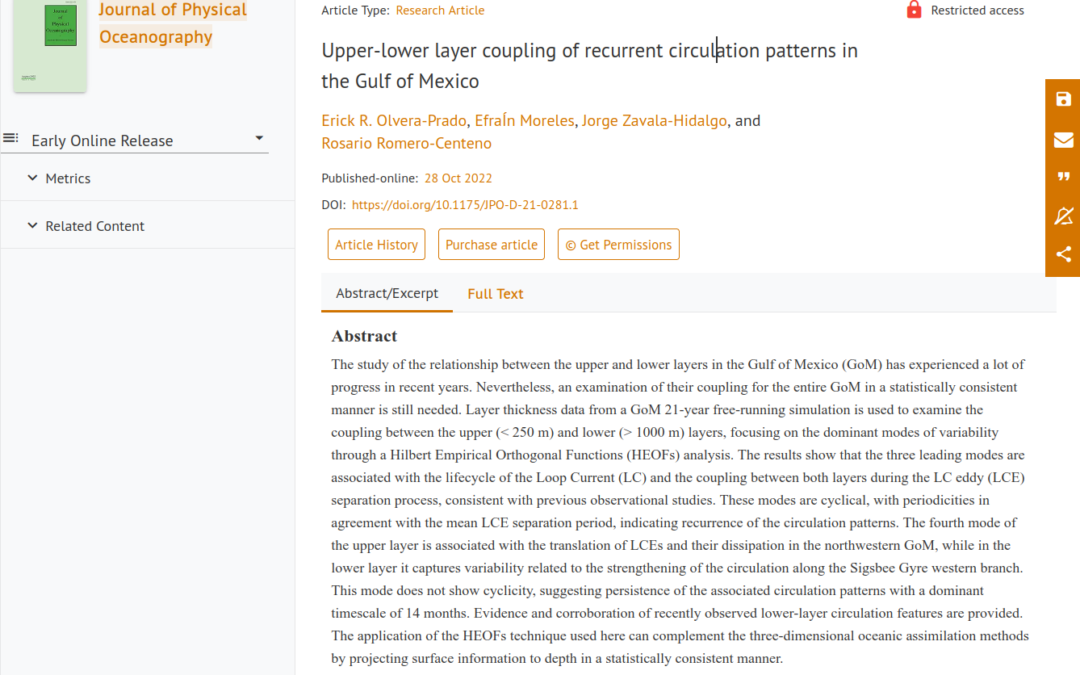Authors: Erick R. Olvera-Prado, EfraÍn Moreles, Jorge Zavala-Hidalgo, and Rosario Romero-Centeno
DOI: https://doi.org/10.1175/JPO-D-21-0281.1
Abstract
The study of the relationship between the upper and lower layers in the Gulf of Mexico (GoM) has experienced a lot of progress in recent years. Nevertheless, an examination of their coupling for the entire GoM in a statistically consistent manner is still needed. Layer thickness data from a GoM 21-year free-running simulation is used to examine the coupling between the upper (< 250 m) and lower (> 1000 m) layers, focusing on the dominant modes of variability through a Hilbert Empirical Orthogonal Functions (HEOFs) analysis. The results show that the three leading modes are associated with the lifecycle of the Loop Current (LC) and the coupling between both layers during the LC eddy (LCE) separation process, consistent with previous observational studies. These modes are cyclical, with periodicities in agreement with the mean LCE separation period, indicating recurrence of the circulation patterns. The fourth mode of the upper layer is associated with the translation of LCEs and their dissipation in the northwestern GoM, while in the lower layer it captures variability related to the strengthening of the circulation along the Sigsbee Gyre western branch. This mode does not show cyclicity, suggesting persistence of the associated circulation patterns with a dominant timescale of 14 months. Evidence and corroboration of recently observed lower-layer circulation features are provided. The application of the HEOFs technique used here can complement the three-dimensional oceanic assimilation methods by projecting surface information to depth in a statistically consistent manner.


Recent Comments